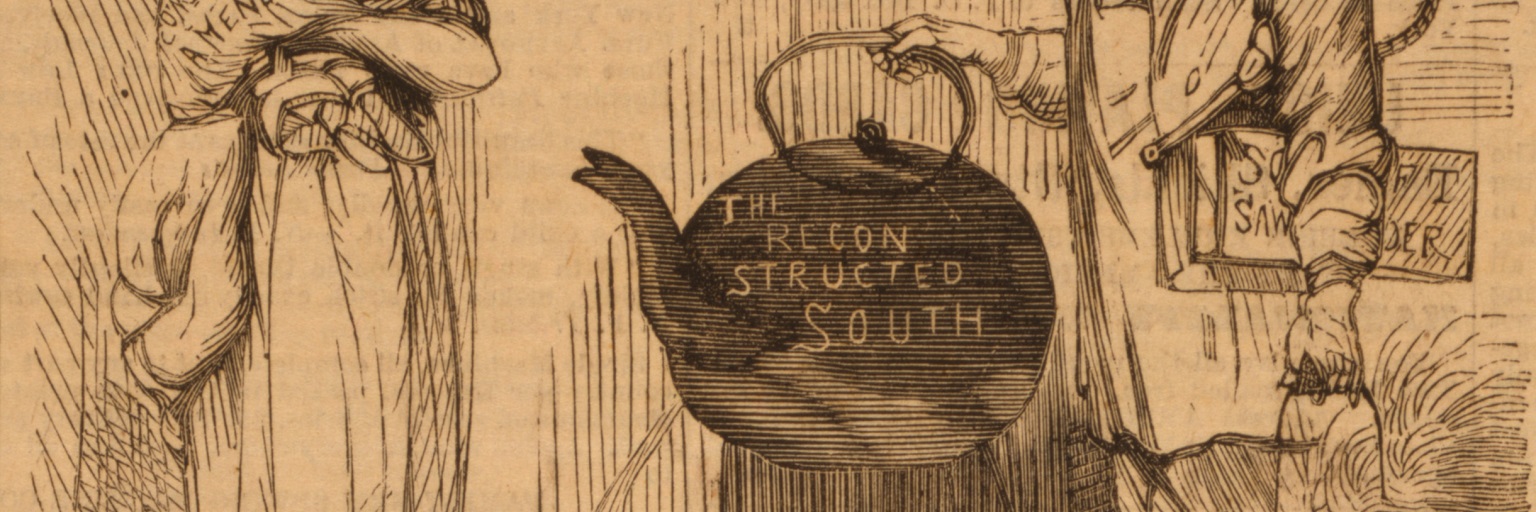Amendment XIV of the United States Constitution
Section 1.
All persons born or naturalized in the United States, and subject to the jurisdiction thereof, are citizens of the United States and of the State wherein they reside. No State shall make or enforce any law which shall abridge the privileges or immunities of citizens of the United States; nor shall any State deprive any person of life, liberty, or property, without due process of law; nor deny to any person within its jurisdiction the equal protection of the laws. (Full text)
The 14th Amendment
After the Civil War, as part of Reconstruction, Congress passed the 14th Amendment on June 13, 1866 and ratified it on July 9, 1868. The amendment included birthright citizenship, incorporating this protection from the Civil Rights Act of 1866, and then focused on the states. It barred states from “abridging the privileges or immunities of citizens” and depriving “any person of life, liberty, or property, without due process of law,” incorporating this protection from the 5th Amendment. The 14th Amendment also prohibited the states from denying to “any person the equal protection of the laws.” It also penalized states that denied suffrage to male citizens over the age of 21 by reducing population used for proportional representation and banned public officials who participated in insurrection or rebellion from being public officials, unless Congress voted by two-thirds to remove the prohibition. The United States would not honor any claim for compensation for emancipated slaves, and Congress had the power to enforce the 14th Amendment with “appropriate legislation.”
Legacy of 14th Amendment
During Reconstruction, confederate states had to ratify the 13th and 14th Amendments to be readmitted to the union, and Congress passed the Civil Rights Act of 1875 as part of its enforcement of the 14th Amendment, which barred racial discrimination in public accommodations and on juries, but in the Civil Rights Cases (1883), the Supreme Court declared it unconstitutional because the 14th Amendment applied to the states and not individual owners of hotels and restaurants, and Congress could not regulate private action under it. With the end of Reconstruction in 1877 and with the Supreme Court upholding Jim Crow segregation through its “separate but equal” ruling in Plessy v. Ferguson (1896), the 14th Amendment had not succeeded in furthering equality for African Americans in the South, but the Equal Protection Clause would pave the way for success in desegregating schools decades later. And, it was used by others to fight for equality and challenge discrimination and disparate treatment based on race as well as sex. Furthermore, the Due Process Clause was essential to selectively incorporate the Bill of Rights to apply to the states and to locate the fundamental right to privacy to support reproductive rights. While hopes may have been dashed in the 19th century, the 14th Amendment became the most important amendment to the Constitution in the 20th century.
United States v. Wong Kim Ark (1898)
The Supreme Court upheld the right to birthright citizenship, including the children of non-citizen parents. Learn More
Yick Wo v. Hopkins (1886)
The Supreme Court held that enforcing impartial, neutral laws on their face, in a discriminatory, prejudicial manner, was a violation of the 14th Amendment’s Equal Protection Clause. Learn More
Brown v. Board of Ed. of Topeka (1954)
The Supreme Court overturned Plessy v. Ferguson (1896) and held that racial segregation in public schools was inherently unequal and thus, unconstitutional under the 14th Amendment. Learn More
Reed v. Reed (1971)
The Supreme Court struck down an Idaho probate law that discriminated on the basis of sex, which violated the Equal Protection Clause of the 14th Amendment. Learn More
Obergefell v. Hodges (2015)
The Supreme Court struck down state laws that banned same-sex marriage as unconstitutional under the 14th Amendment. Learn More
Brown v. Board, in Landmark Cases, posted by CSPAN, includes materials, multimedia, and background information.
Yick Wo and the Equal Protection Clause from the Annenberg Classroom. This video discusses the Yick Wo v. Hopkins case and Equal Protection Clause Here is a handout for teachers, including a lesson plan, to use with the video.

